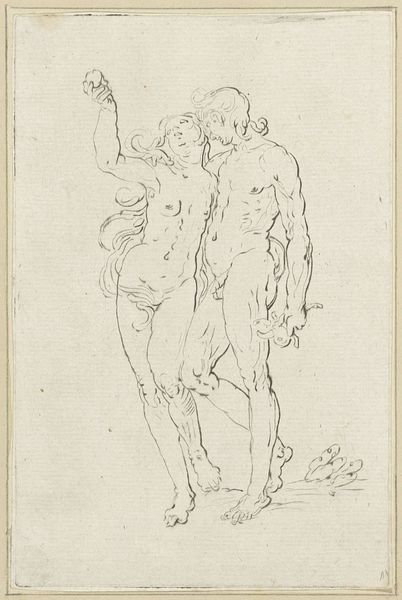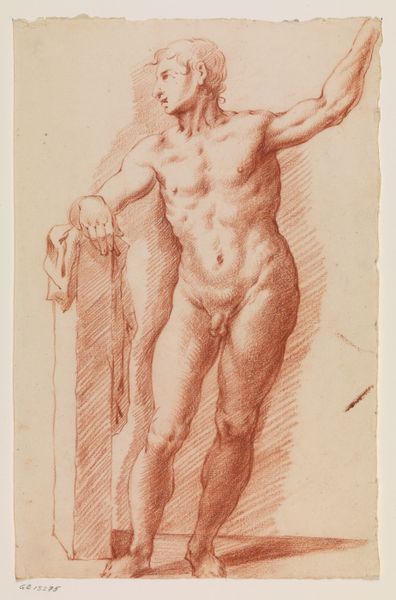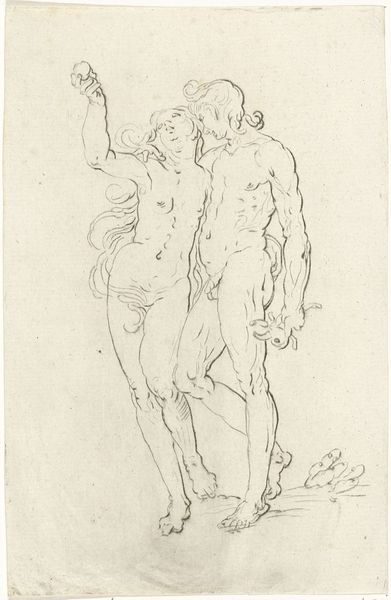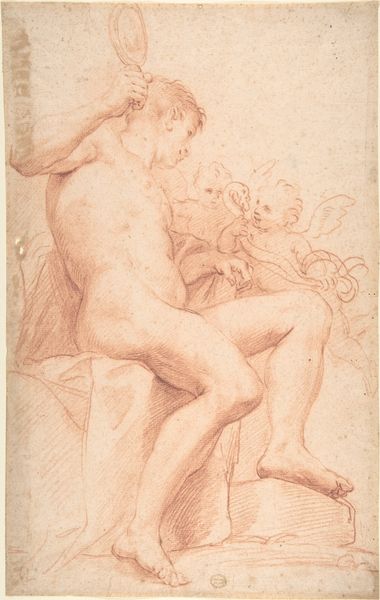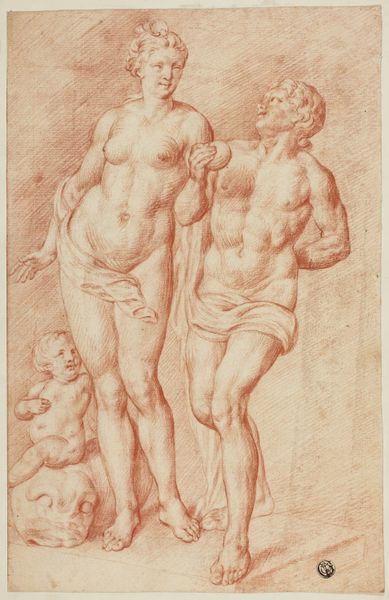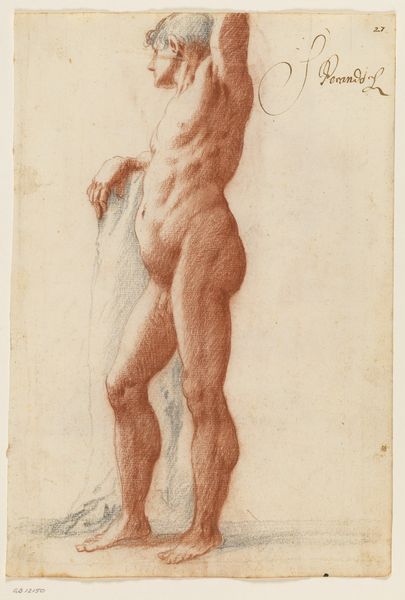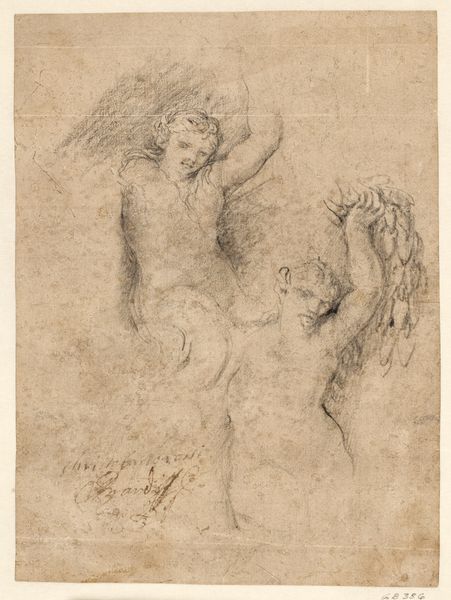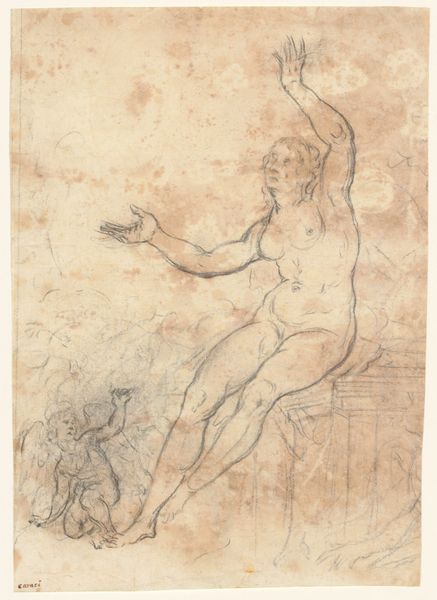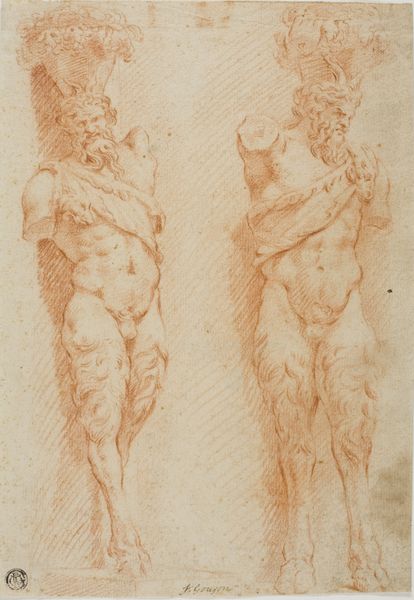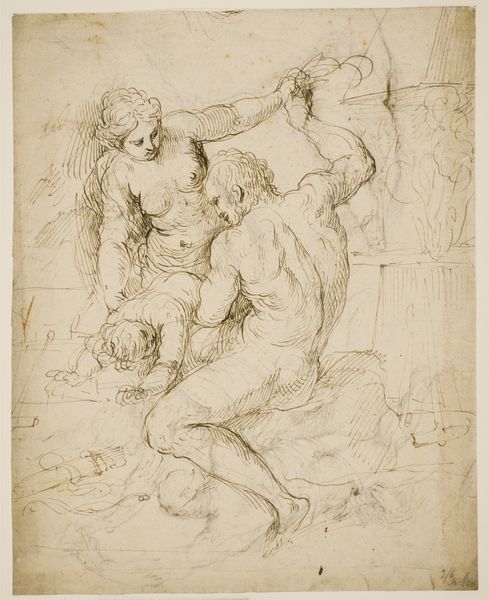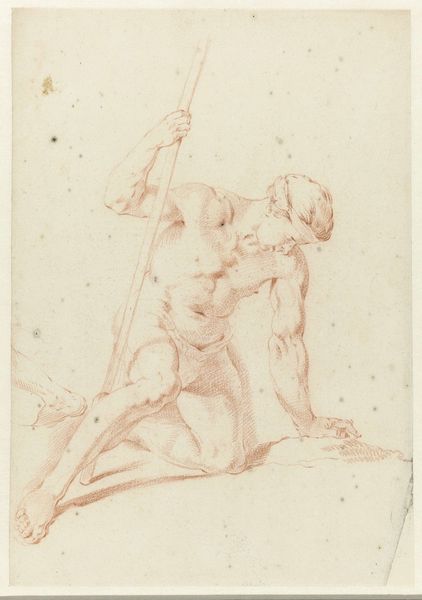
drawing, red-chalk
#
drawing
#
red-chalk
#
figuration
#
11_renaissance
#
italian-renaissance
#
nude
Copyright: Public Domain
Curator: This drawing, "Adam and Eve," is by Abraham Bloemaert. Executed in red chalk, it's currently held here at the Städel Museum. Editor: It has such an immediate intimacy, despite the grand subject. The red chalk lends a softness, almost a vulnerability, to the figures. The composition, with Eve’s raised hand, draws the eye upwards, while Adam's pose seems more contemplative. Curator: The use of red chalk in preparatory drawings like this points to its affordability and workability as a medium accessible within the artist's studio. Bloemaert's choice also allowed for efficient execution, enabling quick revisions and refinements during the conceptual stage, essential for workshop productivity. Editor: The materiality of the red chalk grants it this immediacy as a Renaissance figuration. Bloemaert focuses on anatomical precision. Note the intricate cross-hatching, particularly on the musculature, to give it volume and form. Curator: I agree. The material properties invite an appreciation of artisanal labor, and Bloemaert came from a family of artisans involved in trades from sculpture to architecture. And, more widely, consider the socio-economic dimensions related to artistic skill acquisition during the Italian Renaissance; this impacted an artist’s social positioning. Editor: What I see is Bloemaert’s command of Renaissance conventions to structure the composition—this precise rendition. Consider, for instance, how the use of shading is handled so effectively here, highlighting a certain corporeal presence. Curator: Yes, and we can link the consumption of drawings like these, often serving pedagogical aims within artist workshops. Their market function facilitated a broad distribution and appreciation, democratizing art making, since artisanal modes and studio practices intersected the demand of elite circles for religious themes rendered by skilled practitioners. Editor: Right, yet for all its grounding in production, it achieves this remarkable expression. The lines suggest this tension that exists between their figures and Eden itself. Curator: Seeing these intertwined roles reminds us that even the most seemingly transcendent art emerges from practical skills, social conditions, and systems of exchange. Editor: Agreed. Ultimately, both the aesthetic and the material come together to offer us, the viewers, such a reflective portrayal of humanity.
Comments
No comments
Be the first to comment and join the conversation on the ultimate creative platform.
